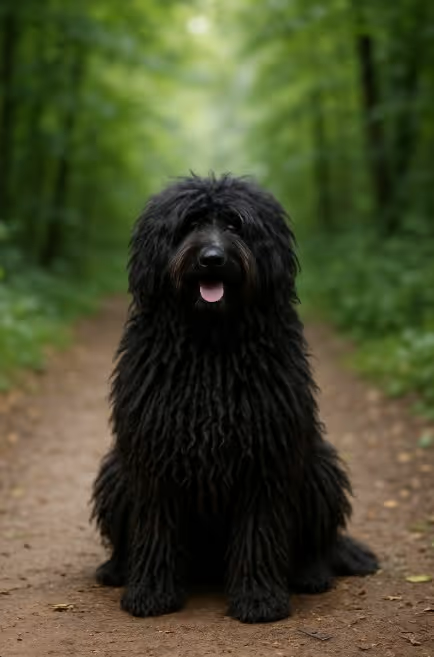The Puli is a compact, springy Hungarian herding dog best known for its spectacular corded coat. Agile, intelligent, and playful, the Puli excels at herding, agility, and obedience while doubling as a lively family companion. If you’re asking “Are Pulis hypoallergenic?”—they’re low-shedding and often tolerated by allergy-sensitive owners, but no breed is 100% hypoallergenic. Ideal for active households that can commit to coat care and daily mental/physical exercise.

Developed in Hungary over a thousand years ago, the Puli worked flocks on the plains (Puszta), prized for its nimble, “bouncing” herding style and weatherproof coat. Ancestors likely arrived with early Magyar pastoralists; modern breed standardization took shape in the early 1900s. Today, the Puli remains a versatile herder and sport dog, known worldwide for both brains and iconic cords.
A small, square, elastic mover wrapped in protective cords.
The corded coat is low-shedding but high-maintenance without the right routine.
A buoyant athlete that needs daily outlets for body and brain.
Clever, enthusiastic, and people-oriented—with a herder’s independence.
Fuel the athlete while protecting joints and coat health.
Generally robust, but responsible screening matters.
Look for preservation breeders and sport-savvy rescues.
Are Pulis hypoallergenic?
Low-shedding and often tolerated by allergy-sensitive people, but no dog is fully hypoallergenic—meet a Puli first.
How do you groom a Puli’s corded coat?
Separate cords by hand weekly, bathe as needed, and thoroughly air-dry; never brush out cords.
Do Pulis bark a lot?
They’re alert vocalizers. Teach “quiet” early and provide ample exercise and enrichment.
Is a Puli good for apartments?
Yes—with 60–90 minutes of daily activity, enrichment, and bark management.
How much exercise does a Puli need?
Plan for 60–90 minutes daily plus brain work (tricks, scent games, training).
Do Pulis shed?
Very little—loose hair stays trapped in cords until bathing/maintenance.
Are Pulis good with kids and other pets?
Typically, yes, with early socialization and supervision; herding nips can be redirected into games.
How old before cords form?
Usually 8–12 months; full cords mature over the next 1–2 years with regular hand-separation.